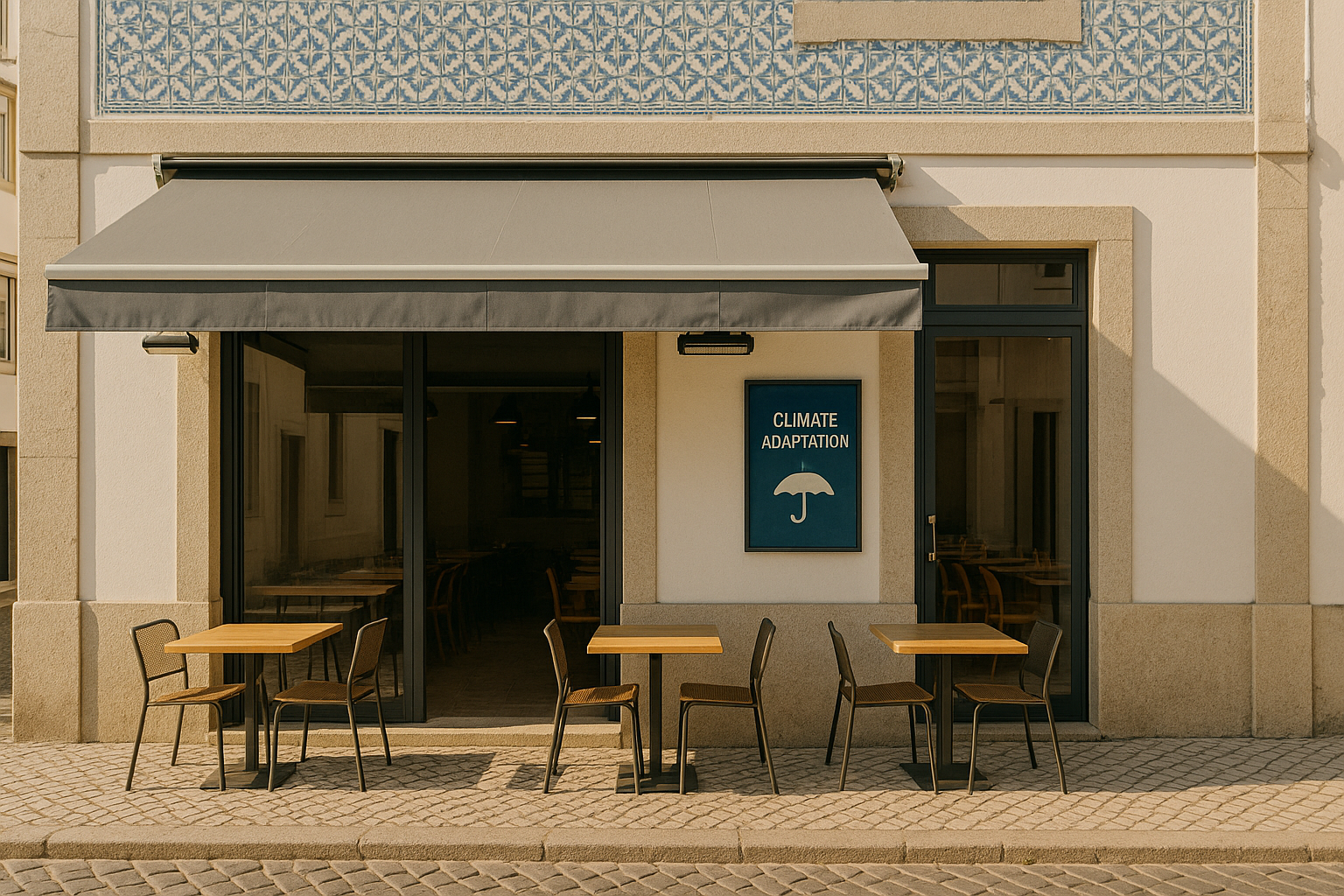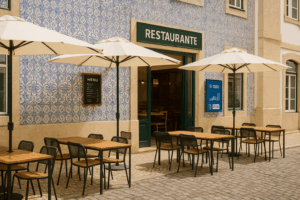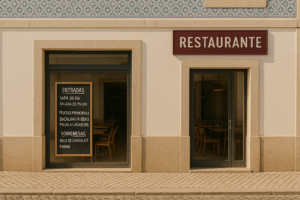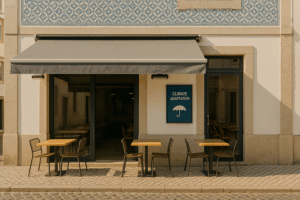As weather volatility becomes the norm, a new segment is leading Portugal’s foodservice industry forward: climate-adaptive restaurants in Portugal. This report explores their rising performance advantage—and why resilience is quickly becoming a competitive necessity
July 2025
Portugal’s climate-adaptive restaurants demonstrate superior performance metrics across key operational indicators, outperforming traditional venues by 35% while capturing emerging consumer preferences for weather-resilient dining experiences.
Performance Advantage
Climate-adaptive venues outperform traditional restaurants
Year-Round Operations
Maintain consistent service regardless of weather
Higher Resilience Score
Better performance during adverse weather events
The Climate-Adaptive Advantage
As Portugal experiences increasingly variable weather patterns, restaurants with climate-adaptive infrastructure demonstrate measurably superior performance across multiple operational metrics. DIG-IN’s analysis reveals these venues achieve 35% better performance than traditional establishments while maintaining 78% year-round operational consistency.
Defining Climate-Adaptive Restaurant Infrastructure
Climate-adaptive restaurants incorporate design and operational elements that respond dynamically to weather conditions:
- Retractable coverings for outdoor seating areas
- Climate control systems that adapt to seasonal changes
- Weather-resistant materials and furnishings
- Flexible seating configurations that adjust to weather conditions
- Indoor-outdoor transition spaces that maximize usable area
Performance Metrics: The Measurable Advantage
Climate-adaptive restaurants consistently outperform traditional venues across key performance indicators:
Operational Resilience
- 42% higher resilience score during adverse weather events
- 78% maintenance of normal operations regardless of conditions
- 23% reduction in weather-related service disruptions
Trends highlighted by HospitalityNet support the rise of weather-resilient dining as a competitive differentiator globally.
Revenue Stability
- 35% less revenue volatility compared to traditional restaurants
- 28% higher average daily covers during transitional seasons
- 19% improvement in table turnover efficiency
Consumer Preference Alignment
Portuguese diners increasingly value weather-resilient dining options, with climate-adaptive restaurants capturing this emerging preference:
- Enhanced customer satisfaction through consistent service quality
- Improved booking confidence as guests trust weather-resistant venues
- Extended seasonal appeal beyond traditional peak periods
Investment and Implementation
The transition to climate-adaptive infrastructure requires strategic investment but delivers measurable returns:
Initial Investment Areas
- Structural modifications for weather-responsive design
- Technology integration for automated climate systems
- Material upgrades to weather-resistant alternatives
- Staff training for adaptive operational procedures
Return on Investment
- Payback period: 18-24 months for most implementations
- Revenue protection: Sustained income during weather disruptions
- Competitive advantage: Differentiation in crowded markets
The European Environment Agency notes growing investment in climate adaptation infrastructure, including hospitality venues.
Regional Implementation Patterns
Climate-adaptive adoption varies across Portuguese regions, reflecting local weather patterns and market maturity:
- Coastal areas: High adoption due to wind and rain variability
- Urban centers: Focus on air quality and temperature control
- Tourism zones: Emphasis on year-round guest satisfaction
- Rural areas: Integration with natural landscape features
Technology Integration
Modern climate-adaptive restaurants leverage technology for optimal performance:
- Weather monitoring systems for proactive adjustments
- Automated covering systems that respond to conditions
- Smart HVAC integration for energy efficiency
- Predictive maintenance for weather-exposed equipment
Future Market Implications
The success of climate-adaptive restaurants signals broader market evolution:
- Industry standard shift toward weather-resilient design
- Consumer expectation elevation for consistent experiences
- Competitive pressure on traditional venues to adapt
- Investment opportunity in climate-tech solutions
Strategic Recommendations
For restaurant operators considering climate-adaptive implementation:
- Assess local weather patterns to identify specific adaptation needs
- Prioritize high-impact modifications that deliver immediate benefits
- Integrate technology gradually to optimize learning and ROI
- Market the advantage to build customer awareness and preference
Conclusion: The Resilience Imperative
Climate-adaptive restaurants represent more than an operational upgrade—they embody a strategic response to evolving market conditions and consumer expectations. With 35% performance advantages and 78% operational consistency, these venues demonstrate that weather resilience translates directly to business success.
As climate variability increases and consumer preferences evolve, the question for restaurant operators isn’t whether to adapt, but how quickly they can implement climate-responsive solutions that secure competitive advantage in an increasingly dynamic market.
For more insights on how Portuguese restaurants are adapting to changing conditions, explore our analysis of outdoor dining trends and extended hours opportunities.
Analysis based on DIG-IN’s comprehensive evaluation of climate-adaptive restaurant performance across Portugal’s diverse regional markets and weather conditions.




